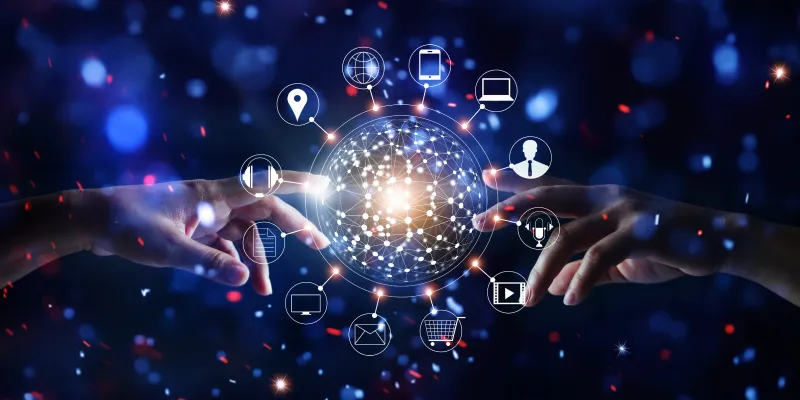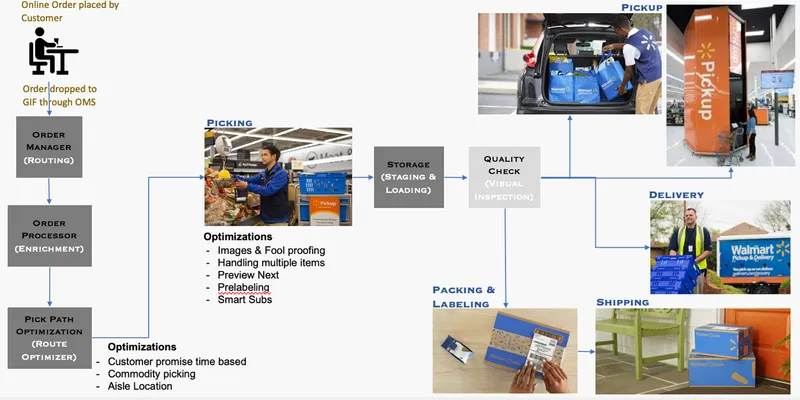Decoding the product will make you king of the omnichannel
Companies need to be omnipresent to the different dynamics of the product experience to create excellence in experience which is the cornerstone of a successful ecosystem.
From the moment you wake up, technology shadows you – starting with the digital alarm, your favourite voice assistant forecasting the weather, planning the route to office using maps, ordering breakfast or picking your playlist and a slew of activities that begin with a click. Countless number of applications and innumerable digital conversations with tech gadgets on a daily basis govern us. We expect one gadget to come in, as we hop on to another. This is a multi-device experience and today, the world runs on it. Here, we explored just one side of the coin – and an omnichannel experience has much more to offer than being limited to the digital world.

Most of our interactions are not restricted to the digital world. We go to malls and retail outlets to shop, and sometimes get our retail fix online. According to the National Retail Federation (the world’s largest retail trade association based in the US), “Multi-channel shopping has seen a significant uplift in the past year and contributed to over 50 percent of shoppers during the peak holiday shopping season in the US last year.” Customers expect a seamless experience from retail stores, whether they are purchasing online or physically at an outlet. True omnichannel experiences would have to transcend across the digital and physical worlds and understand the customers’ preferences to provide a great experience across these mediums.
Let’s take an example of how Cult runs the business, both online and offline. The multiple offerings ranging from the work-out sessions, meals and consultations are driven in offline spaces. However, Cult has built equivalent online experience zones. You can watch videos of the work-out sessions that will happen over three days, understand the impact and schedule your slots based on your preference. They also provide chat sessions to get more details and maintain a record of your fitness, check-ups and much more. The experience offered online is at par with the offline offerings from Cult. An effective omnichannel ecosystem targets to achieve this; blur the lines between offline and online mediums.
What makes a good omnichannel ecosystem?
As a country that is progressing rapidly on its digital journey, India is a fertile ground for retail players to experiment their omnichannel play. Let’s take the example of Lenskart which started in 2010 as an online marketplace for spectacles with only 30 customers per day. Today, the brand has grown significantly and services more than 3,000 customers in a single day.
For a business as hands-on as eyeglasses, Lenskart has 3D try-on options on the app, home eye check-ups, home trial options before purchase, offline store trial and in-store purchase options, built on a strong foundation of great product quality and customer service. Similarly, there are a handful of fashion brands in India offering virtual trials and try-before-you-buy options, with product excellence at the forefront of giving the customer a memorable experience, even with little or no intent of immediate sales.
Omnichannel is built around the philosophy of providing multiple options for customers to discover and buy what they want, across target segments and markets. The customer’s preference to purchase goods varies based on the speed of fulfilment, gratification, convenience and the need for touch and feel experience for some products. The ability to return a product is also a parameter that is considered before purchase.
The experience has to be designed keeping in mind what is feasible from a technology standpoint at the moment, whilst keeping an eye on what can be achieved in the near future with developing technology. The tech stack should be planned in such a manner that it is stable, scalable and capable of providing the best customer experience while retaining the flexibility to make quick changes.
The 3 Cs of Product Excellence
Being the voice of the customer, product excellence is key in creating a successful omnichannel strategy and executing it. Given that it works with different stakeholders in business and technology, they can help bridge the gap between business and technology by focusing on a few of the following critical areas, which can be called the 3 Cs of product excellence in an ideal omnichannel experience.
1. Customer experience
Convenience for customers is one of the most critical areas to focus on, while ensuring a lucid and effortless shopping experience. Customers want their regular and one-time purchases to be as seamless as possible. By displaying suggestions based on previous order data, it can be made easy for the customer to add or take off items from the cart. One-touch ordering and payment along with confirmation that the product will be available for pickup or delivery will ensure that the customer comes back for a breezy experience.
Registering customer complaints should be available across channels as well, with provisions to capture the same over digital medium, on the phone or directly at the stores. This combined with seamless returns through digital or physical mode, helps provide the best omni-channel experience for customers while winning customer loyalty. The procedure also indicates that the transfer of data from the physical to the digital world and vice versa should be seamless and near real-time.
2. Consistency
The challenge with supporting multiple channels is ensuring that the experience is consistent across channels. Customers want to be able to order goods and services through multiple channels and be able to receive and return them as well, across channels. As far as the customers are concerned, all these channels are from the same company, and hence they expect identical and streamlined workflow.
Providing newer experiences/features to increase revenue or reduce costs is important for any business. For large businesses, experimentation on what features work for which target segment, is important in figuring out how consistency can be improved. This is where product excellence drives development by working with multiple teams - engineering to create experimentation pipelines with data sciences to define the buckets and monitor metrics and statistical significance.
For example, the “Click and collect” feature is being implemented by multiple retailers in a global scenario.
Click & Collect model is simple, where a customer purchases online and chooses to collect their purchase at a pre-decided location, instead of home. By picking the ordered items on behalf of the customer, we provide the convenience that the customer wants.

Flowchart of the customer journey at Walmart
3. Communication
Crisp and clear communication is an extension of customer experience. Apt communication should be sent out to customers after appropriate milestones so that the customer can either come and collect their orders from the store when it is ready or make alternative arrangements if certain items are unavailable at the store.
Today, organisations in India are building a niche space to hire more and more product managers. The need for this talent pool, passionate about developing brilliant products and maintaining excellence over a life cycle is vital for the technology ecosystem today. If India can also upskill its current workforce a notch higher, one can doubtlessly say that in no time, as a country, we can become a global powerhouse leading the product excellence landscape.
A McKinsey report states that product managers of the future will be analytics gurus, and possibly the next wave of CEOs. India has between 50,000-70,000 product managers today. Globally, there is an increase in demand for them as well. It’s even apt to say that if you name a company in India, chances are they are hiring product managers right now!
Understanding that product forms the backbone of a brilliant omnichannel experience which is the cornerstone to giving the customer an experience with no hiccups. Hence, to state that product is the new hero in upscaling one’s omnichannel game, is no exaggeration.
(Disclaimer: The views and opinions expressed in this article are those of the author and do not necessarily reflect the views of YourStory.)
(Edited by Suruchi Kapur- Gomes)








